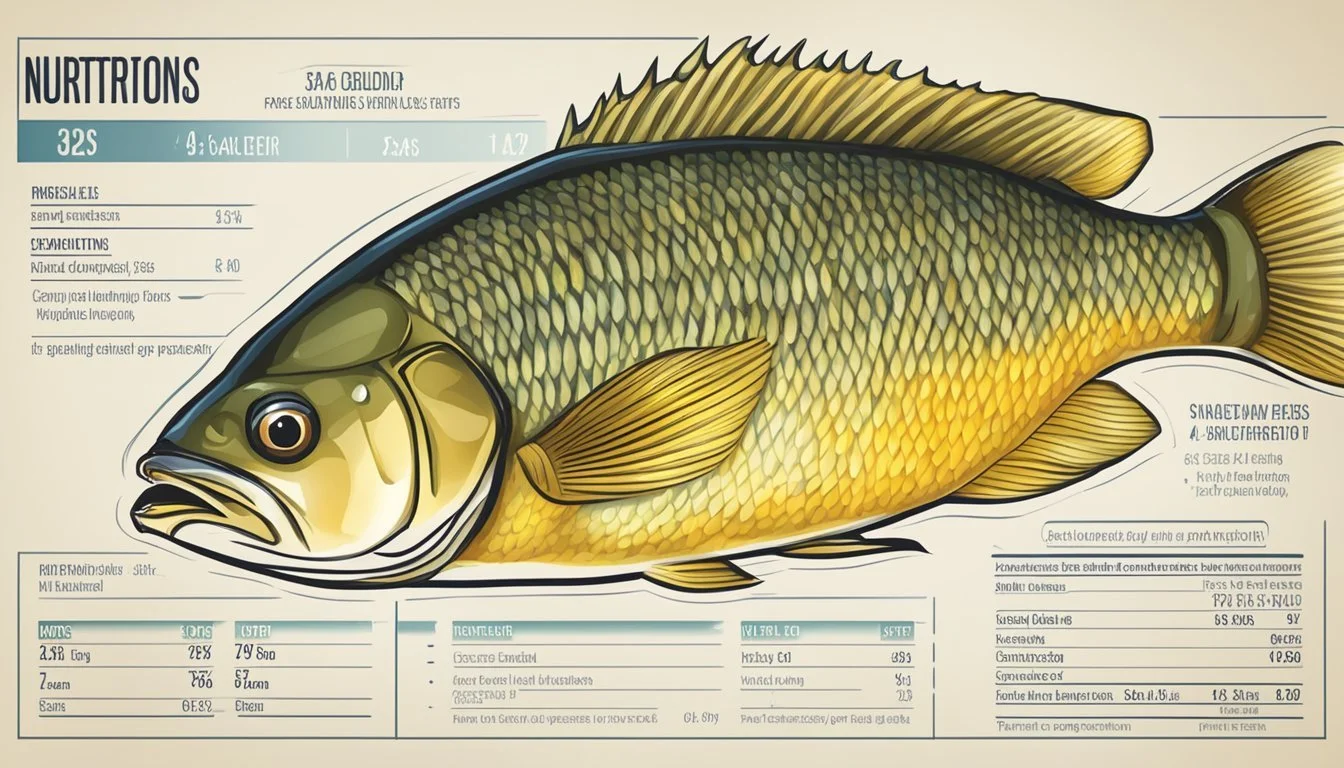Can Diabetics Eat Grenadier?
Understanding Nutrition and Health Benefits
Navigating a healthy diet is crucial for individuals managing diabetes. People with diabetes often have to make careful choices about which foods to include in their meals to maintain stable blood sugar levels. One such food that might spark curiosity is Grenadier, a type of fish known for its lean protein and nutritional benefits.
Grenadier, like other types of fish, can be a valuable addition to a diabetic’s diet due to its low-carb, high-protein content. This fish is an excellent source of omega-3 fatty acids, important for heart health, which is a key concern for diabetics. Including lean proteins such as Grenadier helps in keeping blood sugar levels steady while also providing essential nutrients.
However, it's important to prepare Grenadier in a healthy manner. Opt for grilling, baking, or steaming rather than frying to keep the meal diabetes-friendly. By doing so, individuals can enjoy the health benefits without adding unnecessary fats or calories.
Understanding Diabetes and Diet
Diabetes is a chronic condition marked by high levels of blood glucose. Proper diet is crucial in managing diabetes effectively. Individuals with diabetes must pay close attention to the types and amounts of food they consume.
Type 2 diabetes often involves insulin resistance, where the body does not use insulin efficiently. Managing carbohydrate intake is essential, as carbohydrates have a significant impact on blood sugar levels.
A well-structured meal plan focuses on balancing carbohydrates, proteins, and fats. Non-starchy vegetables, healthy fats, and lean proteins are recommended. Foods with a low glycemic index are preferred due to their minimal impact on blood sugar.
Monitoring A1C levels is critical for diabetics. It reflects average blood glucose levels over the past two to three months. Consistent dietary choices can help maintain favorable A1C levels.
Listed below are some dietary considerations:
Carbohydrate intake: Limit refined sugars and focus on complex carbs like whole grains.
Protein: Incorporate lean meats, fish, and plant-based proteins.
Fats: Choose healthy fats such as those from nuts, seeds, and avocados.
Regular meal timing helps with the effective use of insulin that the body produces or receives through medication. Consulting with a registered dietitian can help tailor a personalized diet based on individual health goals, tastes, and lifestyle.
Managing diabetes involves more than just food intake; it's about making informed choices consistently to manage blood glucose levels effectively.
Nutritional Profile of Grenadier
Grenadier fish are known for their high-quality sources of protein and essential vitamins and minerals. They provide considerable nutritional benefits, making them a potentially good choice for diabetics.
Protein Content
Grenadier fish are rich in protein, which is crucial for maintaining muscle mass and repairing tissues. They offer around 20 grams of protein per 3-ounce serving. This high protein content can help with blood sugar control by providing a steady source of energy and promoting satiety.
Carbohydrate and Fiber
Grenadier fish contain minimal carbohydrates, making them suitable for diabetics. The lack of significant carbohydrate content means they have a negligible impact on blood glucose levels. Additionally, they are low in dietary fiber, which complements their low-carb profile.
Fat Quality and Types
Grenadier fish have a moderate fat content, which includes beneficial omega-3 fatty acids, particularly EPA and DHA. These fats are known for their anti-inflammatory properties and cardiovascular benefits. The fish are low in saturated fats and cholesterol, which supports heart health.
Vitamin and Mineral Presence
Grenadier fish are abundant in various vitamins and minerals. They are an excellent source of vitamin B12, important for nerve health and red blood cell formation. They also provide good amounts of vitamin D and essential minerals like selenium and magnesium, which have antioxidant properties and support overall health.
Benefits of Grenadier for Diabetics
Grenadier can be a beneficial addition to a diabetic's diet due to its low carbohydrate content and rich source of essential nutrients. Key benefits include positive impacts on blood sugar levels, heart health, and weight management.
Impact on Blood Sugar Levels
Grenadier is low in carbohydrates and sugars, making it a favorable option for those managing diabetes. Foods low in carbohydrates help in maintaining stable blood sugar levels.
Regular inclusion of such protein-rich fish in meals can assist in mitigating spikes in blood glucose. This type of dietary pattern is beneficial in controlling diabetes more effectively.
Additionally, the protein found in grenadier contributes to prolonged satiety, which can prevent the urge to consume high-carb snacks. This contributes to more consistent blood sugar levels throughout the day.
Heart Health Considerations
Grenadier is packed with healthy fats, including omega-3 fatty acids, which are beneficial for heart health. Omega-3s are known to reduce inflammation and lower the risk of heart disease, a common concern for individuals with diabetes.
These healthy fats aid in maintaining arterial health and reducing the possibility of strokes. This is critical as individuals with diabetes are at a higher risk of cardiovascular diseases.
Furthermore, grenadier provides essential vitamins like vitamin B12 and vitamin D. Vitamin B12 supports red blood cell formation and nerve function, while vitamin D is crucial for bone health.
Weight Management
Incorporating grenadier into a balanced diet can support weight management, a key element in diabetes control and prevention. It's low in calories yet high in protein, which can promote a feeling of fullness and reduce overall calorie intake.
Proper weight management helps in lowering the risk of obesity, a significant factor in diabetes progression. By feeling more satiated after meals, individuals are less likely to overeat or choose unhealthy snacks, thereby supporting weight loss or maintenance goals.
Moreover, the anti-inflammatory properties of omega-3 fatty acids found in grenadier can assist in reducing inflammation associated with obesity and diabetes.
Incorporating Grenadier into a Diabetic Diet
Incorporating Grenadier, commonly known as Blue Grenadier, into a diabetic diet can be beneficial. It is a lean fish rich in omega-3 fatty acids, known to help reduce inflammation, lower triglycerides, and improve heart health.
Portion Sizes and Frequency
Eating Grenadier in moderation can help maintain a balanced diet. A suitable portion size would be around 3-4 ounces per meal. Consuming this fish 2-3 times a week ensures variety and helps avoid excessive intake of animal protein.
Key Points:
Standard Portion: 3-4 ounces per serving.
Frequency: 2-3 times a week to maintain dietary balance.
Ensuring the portions are part of a varied meal plan can help manage blood sugar levels effectively.
Suitable Preparation Methods
Ideal Preparation Methods for Grenadier include grilling, baking, and steaming. These methods preserve the nutritional value of the fish without adding extra calories or carbohydrates.
Avoid frying or using high-sugar marinades to keep the dish healthy and within the dietary needs of individuals managing diabetes.
Key Points:
Preferred Methods: Grilling, baking, steaming.
Avoid: Frying, high-sugar marinades.
Utilize herbs and spices instead of sugar-heavy sauces to enhance flavor while keeping the glycemic index low and the nutritional profile balanced.
Potential Risks and Considerations
When considering the consumption of Grenadier fish for individuals with diabetes, it is important to evaluate the impact on blood sugar levels and be aware of potential allergies or sensitivities. Paying attention to these factors can help in maintaining overall health and effective diabetes management.
Monitoring Blood Sugar Response
Grenadier fish is generally low in carbohydrates, which means it is unlikely to cause significant spikes in blood sugar levels.
However, it's important for diabetics to monitor their blood sugar response after consuming any new food. Each individual may react differently, so keeping a log of blood sugar readings before and after meals can provide useful insights.
Another factor to consider is how Grenadier fish is prepared. Methods like frying can add unnecessary calories and fats, which might affect blood sugar stability. Opting for healthier cooking methods, such as grilling or baking, is advisable.
Allergy and Sensitivity Awareness
Food allergies and sensitivities can pose potential risks for diabetics consuming Grenadier fish. While fish allergies are not uncommon, it's crucial to note any adverse reactions like itching, swelling, or gastrointestinal discomfort.
If a person suspects a fish allergy or sensitivity, consulting with a healthcare provider is essential. They may recommend allergy testing to confirm any suspicions.
For those with known sensitivities, cross-contamination with other allergens in the cooking environment can also be a concern. Always ensure that the Grenadier fish is sourced from reputable suppliers who follow proper food safety practices.
Alternative Options for Diabetics
Diabetics can manage their blood sugar levels effectively through careful selection of foods. This includes choosing the right fruits, vegetables, proteins, fats, and low glycemic index choices that are suitable for their dietary needs.
Diabetic-Friendly Fruits and Vegetables
Diabetics should focus on consuming fruits and vegetables that are high in fiber and have a low glycemic index. Berries such as strawberries, blueberries, and raspberries are rich in antioxidants and fiber. Leafy greens like spinach and kale are excellent choices due to their low carbohydrate content.
Cruciferous vegetables like broccoli and cauliflower provide vital nutrients without spiking blood sugar. Additionally, avocados offer healthy fats and fiber, making them great for managing diabetes. It's important to avoid high-sugar fruits like grapes and bananas, and instead opt for apples, pears, and citrus fruits which have a more moderate glycemic impact.
Healthy Protein and Fat Sources
Protein and fat are crucial components of a diabetic-friendly diet. Lean meats such as chicken and turkey, fish like salmon and mackerel, and plant-based proteins such as tofu and legumes, are great options. Eggs are also a versatile and nutritious choice for protein.
For healthy fats, nuts and seeds (like almonds, walnuts, chia seeds, and flaxseeds) provide essential fatty acids and fiber. Olive oil and avocado oil are preferable cooking fats over butter and saturated fats. Including fatty fish in the diet helps in providing omega-3 fatty acids, beneficial for heart health.
Low Glycemic Index Choices
Foods with a low glycemic index are particularly beneficial for people with diabetes as they result in slower and more stable rises in blood sugar levels. Whole grains like quinoa, barley, and steel-cut oats have lower glycemic indices compared to processed grains. Legumes such as lentils and chickpeas are excellent sources of low-GI carbohydrates and protein.
Non-starchy vegetables like zucchini, bell peppers, and green beans should be included frequently. Additionally, sweet potatoes and yams have a lower glycemic index compared to regular potatoes. Incorporating these foods helps in maintaining a balanced and diabetes-friendly diet.








